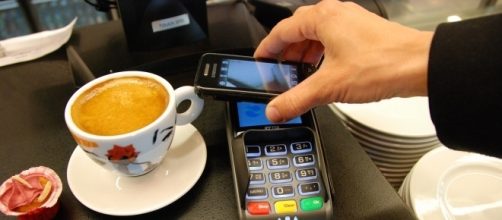When mobile payment platforms were first introduced in 2014 by Apple and a year later by Samsung (among others), expectations were high. But mobile pay has struggled to gain widespread consumer acceptance, limping along with single digit repeat usage rates. However, there is one success story in this field worth noting, a coffee business no less who has seen significant mobile payment growth in the past year with numbers that might be best characterized as “Venti with lots of foam.”
starbucks has been giving their smartphone carrying customers the ability to pay via mobile since 2011, long before tech giants like Apple came to the party.
And the coffee shop’s customers are loyal to the platform. According to recently published data from Adweek, more than a quarter of the chain’s U.S. transactions now come via smartphone.
Loyalty rewards encourage mobile payment use
What has driven the impressive mobile wallet adoption numbers for Starbucks is their app-driven loyalty program, where users accumulate points for purchases towards a free drink. In fact, recent studies show that two-thirds of the chain’s loyalty rewards members use their mobile phone to pay for an item at least once every month.
Meanwhile tech powers such as Apple and Samsung have not seen the same kind of robust usage rates that Starbucks is experiencing, which has been noticed by the financial community.
“Consumers aren’t in love with this vision of the mobile payments platform,” said Karen Webster, the founder of PYMNTS, who spoke last week at CES (the major consumer electronics show) in Las Vegas.
Webster was joined in the discussion by one panelist who indicated that the big tech players are apparently taking a page from the Starbucks model. Samsung Pay recently added a rewards program benefit to their mobile payment platform and Nana Murugesan, the company’s vice president of services, revealed that “daily transaction volume has nearly doubled.”
Although Murugesan would not provide specific numbers, he indicated that Samsung Pay is seeing even better results among their power users, with volumes doubling every week.
“The results have been extremely promising,” said the Samsung Pay executive.
Apple forms new agreements with retailers
There are also signs that Apple Pay may soon be raising their loyalty program profile as well. Last Thursday, USA Technologies announced during the CES show that they would soon integrate their loyalty program (called MORE) with Apple Pay at vending machines across the country. Apple Pay users will receive discounts towards the purchase of future vending items. More than a year ago, the drug retailer Walgreens tied their loyalty program to Apple Pay as well.
All of this presents a very competitive picture for 2017, where major firms are preparing to do battle for the mobile wallets of smartphone users on a global scale.
Apparently mindful of the success which their early mobile payments adoption has brought them, Starbucks does not appear content to merely stay the course. Last month, the coffee retailer announced a new deal with the messaging app WeChat Pay, a mobile wallet popular in China. The agreement lets users purchase their beverages at over 2,500 Starbucks outlets in China using mobile phones and will undoubtedly channel more new customers into the loyalty program.
As the presenters at CES pointed out last week, the key to future growth for mobile payment platforms is repetition, and loyalty programs provide the incentive to do exactly that. Starbucks has already cracked the code by tying mobile use to our daily craving for cup of coffee. Now Apple, Samsung, and others are hoping that users of their platforms will have the same thirst as their java-selling competitor.

